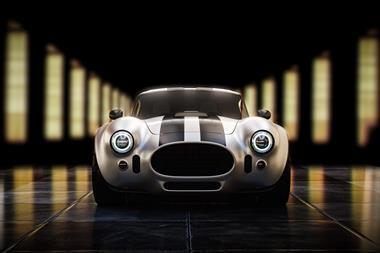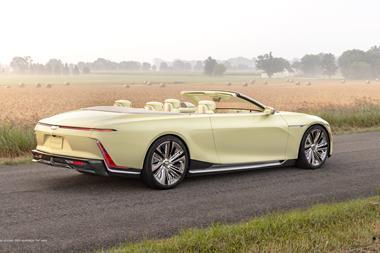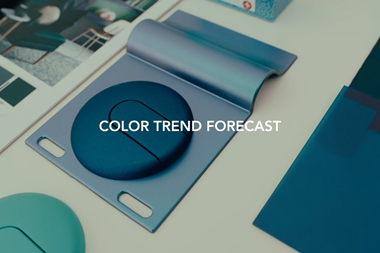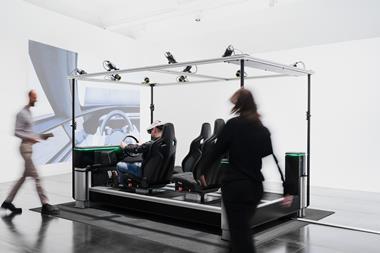New technologies can help designers and engineers achieve differing goals without compromise, according to Magna Exteriors, sponsor of our LA Car Design Forum. Larry Erickson, Magna’s Global Director of Industrial Design, and Paul Spadafora, Global VP of Product Development, joined forces to explain.
Car Design News: New technology is having a big impact on the automotive sector, through trends like electrification and autonomy. What is Magna doing to ease this transition?
Paul Spadafora: Autonomy and electrification are industry-changing factors, and we need to offer technologies and solutions for all vehicle configurations. These changes will come over time and our customers may offer multiple solutions. No matter the platform, efficiency still matters – whether you need to improve fuel economy or electric range. Magna can help in many ways. One is through active aerodynamics, where we have a whole suite of technologies to improve airflow. Another is lightweighting, where we have a wide variety of materials to take mass out of the vehicle.
We don’t know when full-scale autonomy will arrive, but we do know it’s going to include a whole array of sensors communicating through the vehicle exterior, and potentially that exterior will communicate back to the user. How we seamlessly and beautifully integrate these sensors is a key task. We’re working with emblems and front panels that can transmit radar, for example, without any distortion while still providing brand-identifying visuals. That’s a good example of how we’re able to implement new technologies without sacrificing beauty or brand identity.
CDN: How do you ensure designers are aware of the ways Magna can help?
Larry Erickson: What we’re trying to do is share our innovations and start a dialogue early in the development process, because our innovations will only be successful if they are able to solve customer needs. Our involvement with the LA Forum extends our outreach to advanced design groups, for example, because so many OEMs have studios in Southern California. Now is definitely a time when expectations should be examined and assumptions challenged, and LA is a good place for that.
CDN: Will designers need to work more closely with engineers in the future?
Erickson: Many new technologies and processes have qualities that will be specific to a manufacturer – to their configuration, their volume or their cost model – and many of those are in transition or will soon be challenged.
Everyone wants to make successful products, but the evolutionary approach is often driven by legacy, derived from the last thing you did. Technologies are now changing materials, manufacturing and assembly so quickly.
Designers working in advanced design studios may be ready for this change, but others in their organizations are not exposed to innovation in the same way. We need to find a way to communicate with them about what we can do, so they’ll have the foundations needed to put their design ideas into production.
Spadafora: The solutions we have today, from computer-aided engineering to nanotechnologies, mean we can meet requirements that could only be dreamed of in the past. When we’re brought in early and upfront, the ability to unleash those capabilities in new ways really becomes apparent.
It’s these types of initiatives that drew me to Magna last year, after more than 20 years at General Motors. It was a natural move from my last role as vehicle chief engineer, because Magna Exteriors has such a large part to play in shaping the future of mobility.
We recently brought together our global product lines, engineering, innovation and design teams within my product development organisation at Magna Exteriors, and I strongly believe this combination will create real synergies moving forward.
CDN: What kind of design possibilities are being unlocked by new technologies today?
Spadafora: In front end modules, we’re able to incorporate multiple functions in one carrier, as opposed to multiple layered pieces. We can be much more efficient, saving mass and cost, and shortening the front overhang.
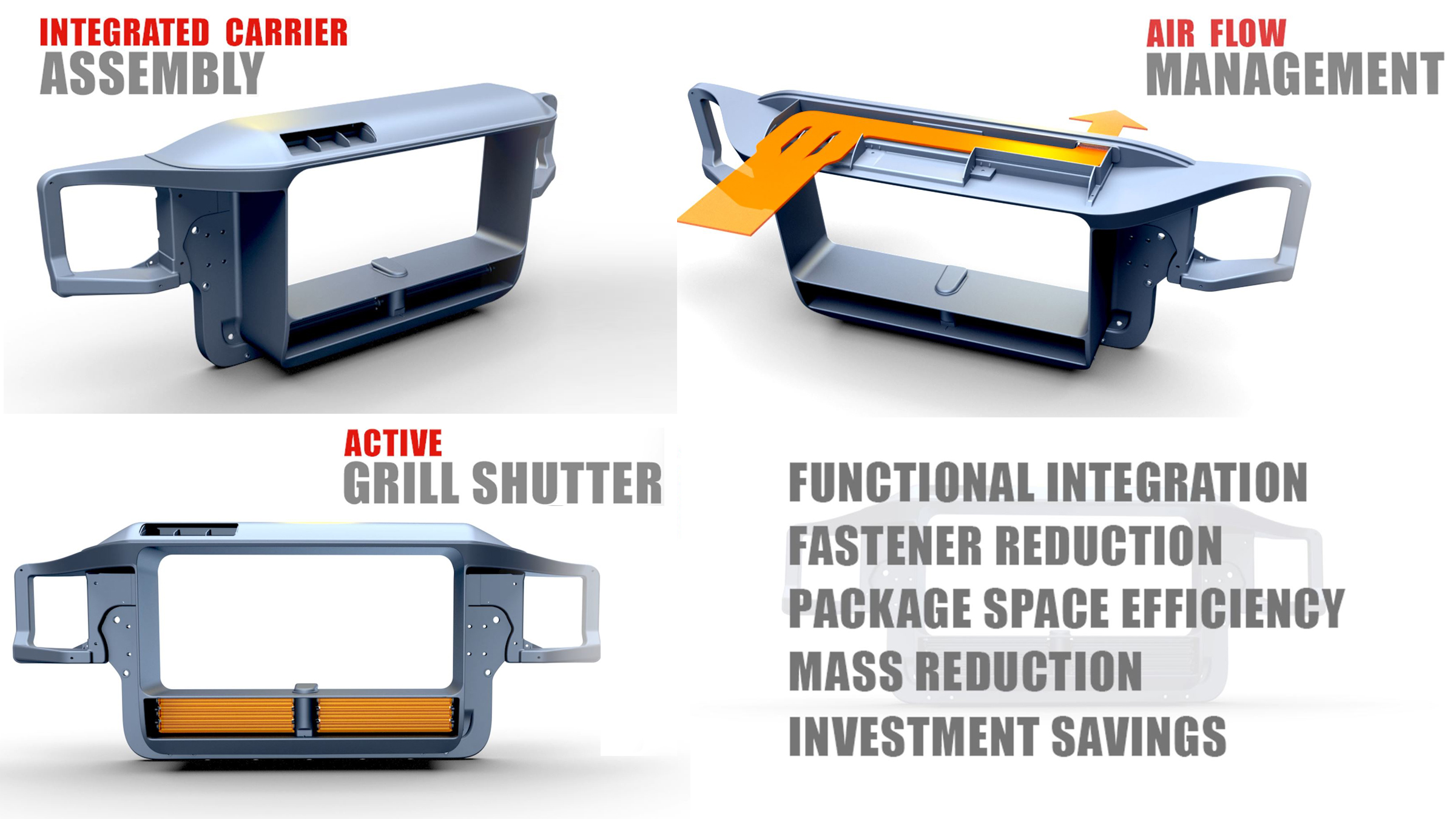
Front end modules can incorporate multiple functions
In liftgates, styling is much more flexible with thermoplastics rather than steel or, even more limiting, aluminium. When you can do undercuts and combine a deep draw depth with tight radii, and also save up to 25% of the mass, it really opens things up. We see those benefits on cars like the new Jeep Grand Cherokee and Acura RDX, both of which have launched successfully at volume.
Similarly, active aero technology lets you have all the aesthetics you desire while still reaching your fuel economy or aerodynamic targets. There’s always been a battle between designers who want great aesthetics and engineers who need to reach range or fuel economy targets. We offer solutions that let you do both. You can have beautiful aesthetics on your vehicle, but when you get to a certain cruising speed active aerodynamic features are automatically engaged.
Active aero can also go further and do more than static aero, because you don’t need to worry about ramp angles and curb height requirements. In the case of the Dodge Ram pickup, our active front deflector yields a 7 percent drag improvement, saving one mile per gallon on the highway. This translates to an estimated one million gallons saved across the entire fleet.
Erickson: That’s where early collaboration really starts to matter. Aerodynamic optimization is a very complex task, and you want to collaborate with a supplier that can offer all the different aerodynamic solutions, not just one. That’s where Magna has an advantage: in the sheer variety of things we’re doing, in very diverse applications.
CDN: What are the key design trends you expect technology to enable in the future?
Spadafora: The trend we’re seeing is to maintain the simplicity and beauty of an exterior. That’s why we talk about things like deployable active aerodynamics, sensor integration behind panels, and liftgates with better contours. We’re also seeing, in the autonomy space, changes in doors and how they deploy, which lend themselves quite well to our technologies.
Erickson: As the market gets more crowded, it’s becoming more and more challenging to create a unique aesthetic. The ability to make more complex forms gives you more tools to work with. We’re also working hard with lighting to accentuate identity. We see lighting spreading onto exterior panels for branding and user convenience. It’s easier to broadcast light through a composite panel than through metal.
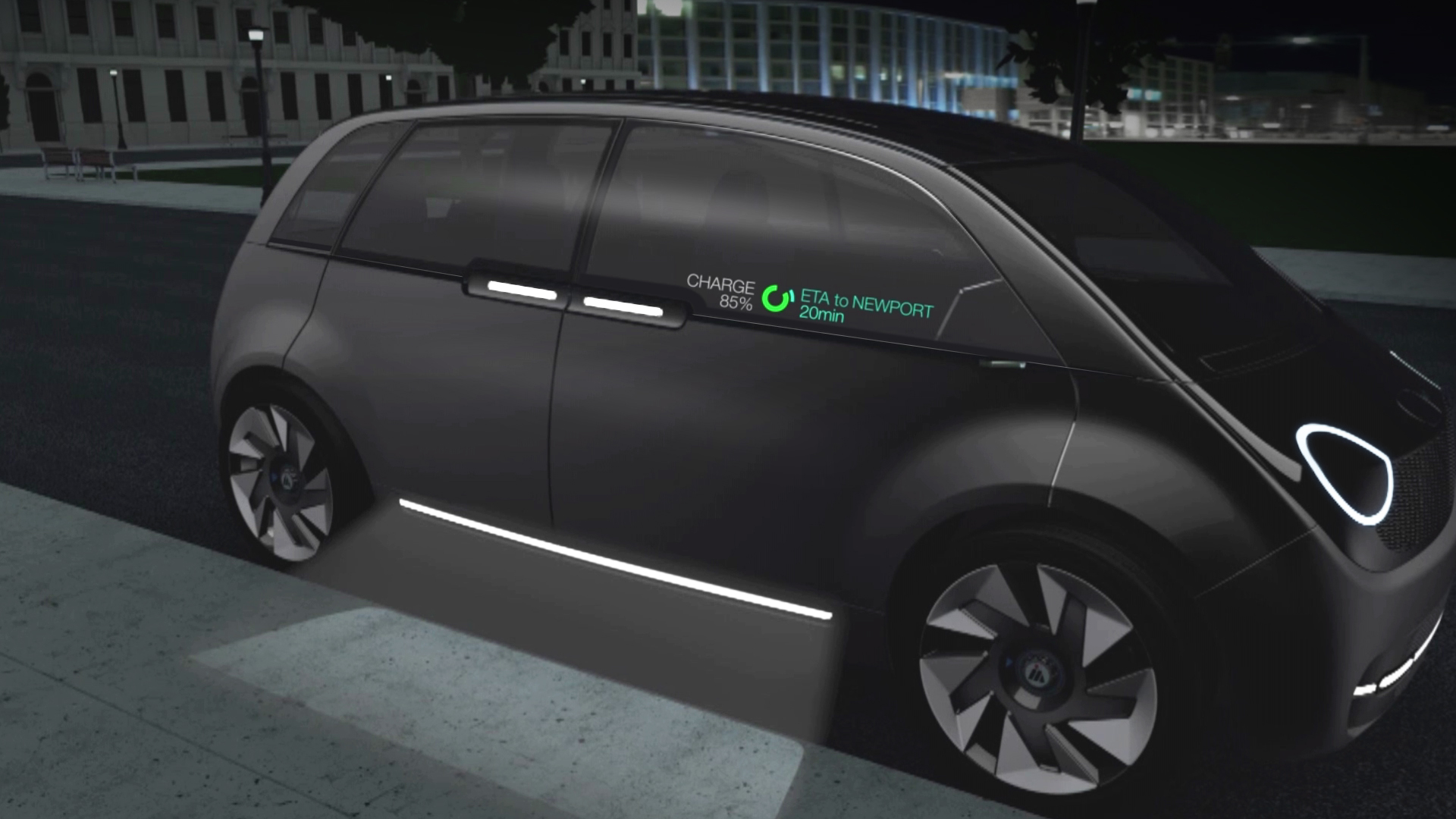
Lighting can accentuate brand identity
CDN: How will Magna help OEMs benefit from these future trends?
Spadafora: We have a world-class material science group, with patents pending on technologies that allow us to transmit light or signals through very high gloss, stylised surfaces in the case of a front panel, or a 3D chrome appearance in the case of an emblem. The need to combine surface quality and technical capability will become much more acute as autonomous technology develops. When you need to see further and sense further, distortion becomes much more critical.
Erickson: As vehicle segments fragment, with fewer extremely high-volume models and more competitors in the market, the advantages and disadvantages of different materials will shift. Some attributes of metal will matter less, and the advantage of plastic and advanced composite exterior panels may suite tomorrow’s vehicles in ways that are still in development. Today, integration of sensors presents a wide range of challenges. It helps that we have diversity in innovation, from materials, manufacturing and assembly through to delivery, with Magna people collaborating in the same organisation.










